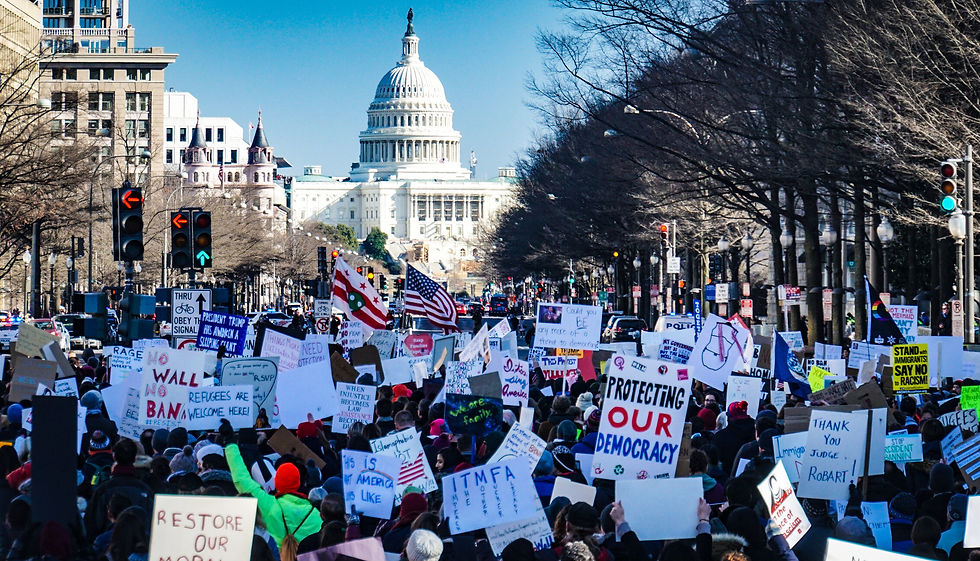Programmed to Polarize: Social Media and Right-Wing Populism
- Chloé Bissonnette

- May 12
- 3 min read
Much research has studied the impacts of the media on politics, particularly on the polarization of political thought. Scholars now recognize the power of social media and its complex algorithms in shaping public opinion, but to what extent? The rise of far-right governments across Europe, the election of US President Donald Trump, and the growth of various populist movements globally underscore the role of digital platforms in amplifying political polarization, alongside disinformation, censorship, and hostility.

Traditionally, the function of the media was to inform the public, foster healthy debate, and serve as a watchdog of democracy. The dramatic shift in the media’s landscape over the last two decades has contributed to the fragmentation of news media. Now more than ever, viewers and readers have developed the dangerous tendency of only consuming content that aligns with their political views, participating in the echo chamber phenomenon.
Social Media Algorithms
At the heart of social media platforms lies a powerful and invisible force: algorithms. These complex sets of code determine the content that appears in each user’s feed, search results, and recommendations. Today, the most popular social media platforms, TikTok, Instagram, Facebook, YouTube, X, etc., are designed to prioritise viewer engagement rather than accuracy, content diversity, and a balance of perspectives. While this model is effective for engaging users, it fuels the echo chamber phenomenon.
Algorithms are designed to promote content that engages the user, this means promoting content that encourages strong emotional reactions, whether positive or negative. Therefore, extreme and divisive opinions tend to be promoted, while moderate and nuanced conversations tend to be ignored. Over time, the user heads down an ideological silo where nuanced content is absent or demonized. Rather than reflecting the users' interests, the algorithm shapes them.
The Rise of Right-Wing Populism
Over the last few years, political leaders have harnessed social media platforms to bypass traditional media outlets, speak directly to their supporters, and mobilize their political discourse on their terms. Leaders, including Donald Trump in the United States, Marine Le Pen in France, and Viktor Orbán in Hungary, have used emotionally charged narratives to build strong connections with their bases on social media.

The presence of political discourse on social media has led to a rapid rise in disinformation, not only because it advances certain narratives, but also because it tends to be more engaging than factual information. Whether it be through fabricated news stories, images manipulated by AI, or conspiracy theories, research shows that disinformation spreads faster and farther than the truth as it evokes stronger emotional reactions and is favoured by social media algorithms. The 2024 US presidential election further exacerbated this issue through further disinformation and the delegitimization of traditional media outlets.
In response to the threat of disinformation, some social media platforms chose to engage in fact-checking and censorship, despite it being heavily criticized for their attack on the freedom of speech. This led to Meta announcing in January that it would be removing fact-checkers from its platforms and reverting to community notes. This comes at a time when the Trump administration is engaging in further censorship while claiming to defend free speech and access to information.
The intersection of social media algorithms, disinformation, and censorship has created a volatile digital ecosystem that places democracies in a difficult position. Political polarization is not just a product of the system, but has become a political strategy.
The Fight Against Polarization and Disinformation
The media has long served as a watchdog for democracy by providing quality, independent, and factual information to the masses. It is necessary to recognize that the solution to disinformation is not censorship; fighting against political polarization and the spread of disinformation requires educating the consumer and supporting credible media outlets.
Media literacy must become a part of civic education curricula. Individuals, particularly youth, must be provided with the tools necessary to critically analyze the information they see, read, and ultimately share. This includes understanding the power of algorithms, identifying polarizing content, and distinguishing trustworthy journalism from manipulative misinformation. Media literacy is more than an individual tool, it is a necessary safeguard to democracy.
Furthermore, as it represents a violation of the freedom of speech and access to information, fighting against political polarization and disinformation can not be done through censorship. Censorship leads to biases, rather than to the spread of credible information. Funding credible traditional media sources allows individuals to get factual information from sources that are not influenced by algorithms.
In the end, battling political polarization and disinformation, as well as protecting democracy, is done by strengthening the truth. Investing in media literacy and independent journalism provides individuals with the tools necessary to participate in a strong democracy.









Comments